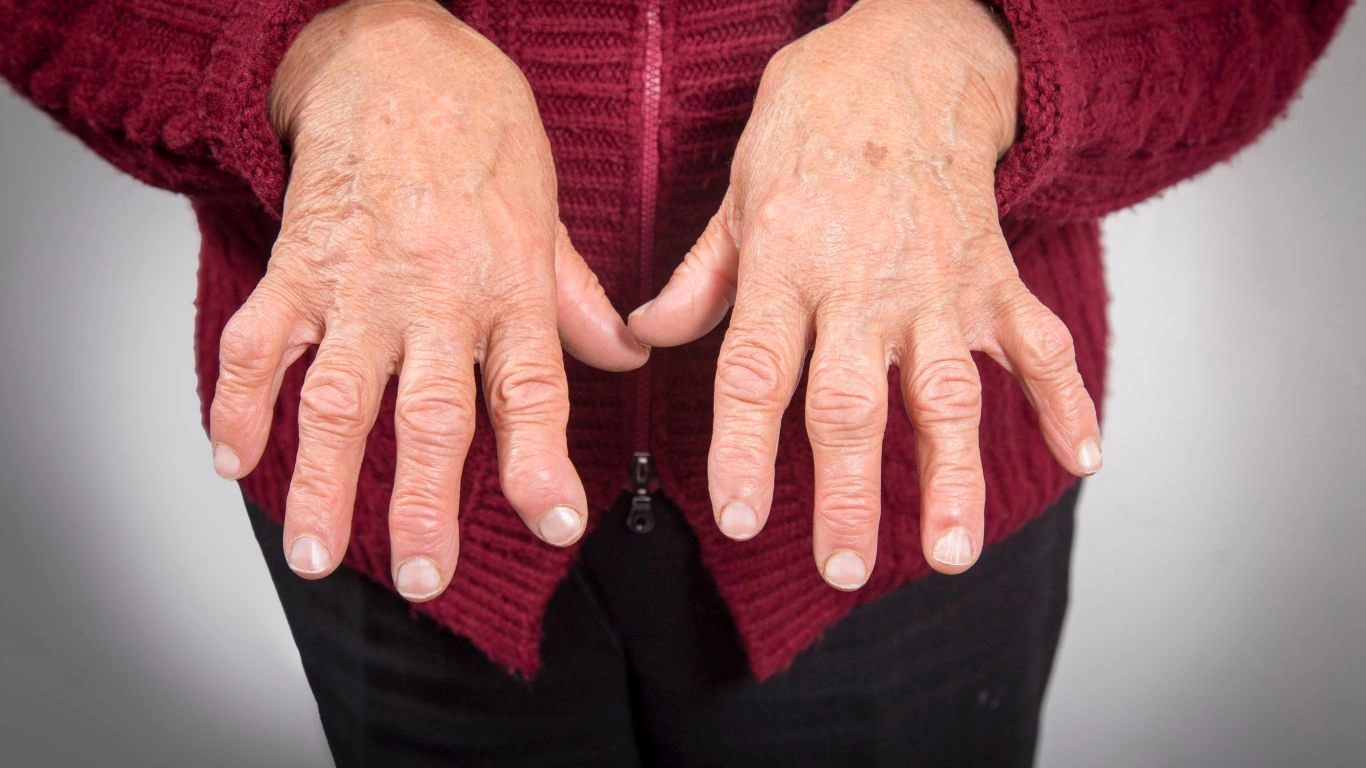Discover the Best Way to Track Rheumatoid Arthritis Symptoms Effectively
When it comes to managing rheumatoid arthritis (RA), one question I hear time and again from patients is: “What’s the best way to track rheumatoid arthritis symptoms?” From my years working as a rheumatology nurse practitioner, I can tell you it’s not just about jotting down joint pain or swelling on a piece of paper. Tracking RA symptoms effectively is a game changer—it helps you and your healthcare team spot flare-ups early, adjust treatments, and ultimately keep your quality of life in check. But with so many methods out there, finding the right approach can feel overwhelming.
Over time, I’ve seen how a personalized, consistent system for symptom tracking can empower people with RA. It’s not just clinical data or numbers—it’s about tuning into your body, understanding your patterns, and creating a reliable record that makes your conversations with your doctor way more productive. In this post, I’ll walk you through some of the best ways to track your rheumatoid arthritis symptoms, mixing in tips I’ve learned from working directly with patients who live with this condition every day.
Why Tracking Rheumatoid Arthritis Symptoms Matters

One of the trickiest things about RA is how unpredictable it can be. Symptoms can vary widely—not just from person to person, but day to day for the same individual. Some days you might feel pretty good, and then suddenly, swelling and stiffness ramp up out of nowhere. That’s why regular, detailed symptom tracking is critical. When you keep a close eye on your symptoms, you gain valuable insight into what triggers flares and what helps ease them.
From my clinical experience, I’ve noticed:
- Patients who keep a consistent symptom log often report feeling more in control of their disease.
- Doctors rely on patient-reported data to make timely medication adjustments.
- Tracking symptoms can highlight trends that might otherwise go unnoticed—like how stress, weather, or diet might influence your RA.
In short, tracking is not just a chore; it’s a powerful tool in your RA management toolkit.
The Best Way to Track Rheumatoid Arthritis Symptoms: Getting Started

If you’re new to tracking your symptoms, here’s the first thing I always recommend: keep it simple and consistent. You don’t have to capture every little detail to start making a difference. A straightforward system that you can stick to day after day is better than a complicated one that ends up abandoned after a week.
Pick Your Tracking Method
There’s no one-size-fits-all answer here—choose what fits your lifestyle and preferences:
- Traditional Journal or Notebook: This low-tech approach works great if you like writing things down by hand. It’s easy to personalize, and you can quickly jot symptoms, medication changes, or any questions for your doctor.
- Mobile Apps: Nowadays, many apps are designed specifically for arthritis tracking. They let you log symptoms, medication doses, and even moods, and some can generate reports for your healthcare provider.
- Spreadsheets: If you like a bit of structure but still want flexibility, setting up a simple Excel or Google Sheets spreadsheet can work well.
What Symptoms Should You Track?
When tracking RA symptoms, focusing on a few key areas can give you the clearest picture:
- Joint pain and stiffness: Note the intensity, location, and duration. Morning stiffness is especially important.
- Swelling or warmth: These are signs of active inflammation.
- Fatigue levels: RA-related fatigue can be profound and often correlates with flare-ups.
- Medication effects and side effects: Keeping track of how you feel after doses can help fine-tune your treatment plan.
- Triggers: Record anything you suspect might influence your symptoms—like weather changes, stress, or diet.
Remember, the goal isn’t just to note when you feel bad, but to capture the ups and downs. This detailed info can help your rheumatologist adjust your care in ways that truly make a difference.
Tools and Tips to Make Symptom Tracking Easier and More Effective

By now, you probably get why tracking symptoms is a must—but let’s be honest, keeping up with it consistently can be a challenge. I’ve seen plenty of patients start strong and then lose steam after a few weeks. The trick? Finding tools and tricks that fit smoothly into your daily life.
Apps That Actually Help, Not Overwhelm
From my experience in rheumatology clinics, patients who embrace digital tools tend to find more success in staying consistent—especially if the apps are user-friendly and tailored for RA. Here are a few tips on what to look for:
- Simple input options: Apps that let you log symptoms with just a few taps are more likely to become part of your routine. If it feels like a chore, you’ll skip days.
- Customizable symptom tracking: Because RA is so individual, the best apps let you track what matters most to you. Whether that’s joint stiffness, fatigue, mood swings, or medication side effects.
- Trend visualization: Seeing your symptom patterns on a graph or calendar can be super motivating and also helps your doctor get the bigger picture at a glance.
- Reminders and alerts: Gentle nudges to log your symptoms or take meds can keep you on track without feeling nagged.
Some popular apps I’ve recommended in the clinic include MyRA, RheumaTrack, and ArthritisPower. But honestly, the best app is the one you actually use—so don’t hesitate to try a few until you find your match.
Journaling: More Than Just Words on Paper
If you’re more old-school or prefer a tactile method, journaling can be incredibly powerful. I’ve encouraged many patients to keep a dedicated RA journal—not just to log symptoms but also to capture their thoughts, emotions, and lifestyle changes.
Why does this matter? Because RA doesn’t just affect your joints—it impacts your entire wellbeing. Stress, mood, and sleep quality all play into symptom severity. In my years working closely with patients, I’ve found that those who take a moment to reflect daily often feel more connected to their disease process and better equipped to talk about it with their healthcare team.
Tips for successful journaling:
- Set aside a specific time each day, even if it’s just five minutes.
- Write freely—don’t stress about grammar or style. This is for your eyes only.
- Include both physical symptoms and emotional notes.
- Add any questions or concerns to bring up at your next appointment.
Integrating Symptom Tracking Into Your Rheumatoid Arthritis Care

Tracking symptoms isn’t just a solo activity—it’s a crucial part of your healthcare journey. As a nurse practitioner, I always stress the importance of sharing your symptom logs during appointments. It helps me, and other healthcare providers, tailor treatment plans much more precisely.
Making Your Symptom Data Work for You and Your Doctor
Think of your symptom log as a bridge in communication. When you show up with detailed notes or app reports, you’re giving your provider valuable insight into your day-to-day struggles and improvements. This can:
- Help identify subtle flare triggers that might not come up in conversation.
- Guide medication adjustments before symptoms worsen.
- Support discussions about lifestyle changes, physical therapy, or alternative treatments.
From personal experience, I can say that patients who actively engage in tracking often feel more heard and involved in their care, which makes a big difference in long-term disease management.
Collaborate With Your Care Team
Another key piece of advice is to involve your entire care team in your tracking efforts. Rheumatoid arthritis often requires a multi-disciplinary approach—including rheumatologists, nurse practitioners, physical therapists, and sometimes psychologists or dietitians.
When you bring your symptom records to each appointment, it helps everyone stay on the same page and coordinate care more effectively. For example, your physical therapist might adjust exercises based on your joint stiffness logs, while your dietitian might tweak nutrition plans if you report fatigue or digestive issues.
Practical Habits to Enhance Your Symptom Tracking Routine

Before we dive into more advanced tracking techniques, let’s talk about some everyday habits that can make your tracking easier and more accurate:
1. Make It Part of Your Daily Routine
Whether it’s morning coffee time or right before bed, try to link your symptom tracking to an existing habit. Consistency is easier when it fits naturally into your day.
2. Use Reminders
Set alarms or notifications on your phone or smartwatch. Trust me, even the most diligent among us forget sometimes.
3. Be Honest and Detailed
Don’t sugarcoat or skip days when symptoms are mild or absent. Those “good” days provide just as much valuable information as the bad ones.
4. Track Your Medications and Dosages
Medications can cause side effects or take time to kick in. Keeping track of when you took what, and how you felt, can help your care team spot patterns and adjust treatment safely.
Don’t wait for flare-ups to happen. Bringing your symptom log to every visit, no matter how routine, keeps your provider informed and ready to support you.
Advanced Strategies to Elevate Your Rheumatoid Arthritis Symptom Tracking

By now, you’ve built a solid foundation for tracking your rheumatoid arthritis symptoms. But as someone who’s walked alongside many patients managing this chronic condition, I know that sometimes it helps to take things a step further. These advanced strategies aren’t about complicating your routine—they’re about helping you gain deeper insights and, frankly, making your tracking more meaningful for you and your care team.
Incorporate Objective Measures Alongside Symptom Logs
Symptom tracking is largely subjective—how you feel, what you notice—but combining it with some objective data can add a lot of value. For example, you might measure:
- Joint range of motion: Using a simple goniometer or even smartphone apps that measure angles, you can track how much movement you have in affected joints over time.
- Grip strength: A handgrip dynamometer is inexpensive and easy to use. It provides a quantifiable measure of hand function, which is often affected in RA.
- Swelling measurements: Some patients measure joint circumference with a flexible tape measure, noting any changes that might indicate swelling or inflammation.
When you bring these measurements to your appointments alongside your symptom diary, your provider gets a more complete picture of how your RA is evolving. It’s especially helpful if your symptoms don’t always match what shows up on blood tests or imaging.
Track Your Lifestyle Factors for Better Context
Something I always emphasize is that rheumatoid arthritis doesn’t happen in isolation. Your daily habits and environment influence how your symptoms behave. Start noting factors such as:
- Sleep quality and duration: Poor sleep can worsen fatigue and pain.
- Stress levels: Emotional and psychological stress often correlate with flare-ups.
- Physical activity: Both too little and too much movement can affect symptoms differently.
- Diet and hydration: Some patients notice symptom changes linked to certain foods or fluid intake.
Journaling these alongside your RA symptoms gives you clues about possible triggers or helpful habits. Plus, it helps your care team recommend personalized lifestyle modifications that complement your medical treatment.
Using Your Symptom Data to Advocate for Yourself

One of the most rewarding things I’ve witnessed as a nurse practitioner is how empowered patients become when they take control of their health data. Tracking symptoms isn’t just about clinical follow-up—it’s about self-advocacy. Armed with accurate, detailed records, you can:
Have More Productive Doctor Visits
Instead of vague descriptions like “I’ve been feeling worse,” you can say, “On these specific dates, my joint pain increased from 3/10 to 7/10, and I noticed swelling in my wrists.” This clarity helps your doctor make faster, better decisions about treatment adjustments.
Recognize Flare-Ups Early
By understanding your personal symptom patterns, you’ll be able to spot the subtle signs that a flare is brewing. Catching it early means you can use prescribed interventions sooner and potentially reduce the severity or duration of a flare.
Communicate Your Needs Clearly
Sharing your tracking records with family or caregivers also helps them understand your condition better. This can improve the support system around you, whether it’s assistance with daily tasks or emotional encouragement during tough days.
Tips From My Practice
Here are a few things I tell patients who want to become proactive partners in their RA care:
- Bring your symptom tracker to every appointment, whether in-person or virtual.
- Don’t hesitate to discuss patterns or concerns, even if you think they’re minor.
- Use your logs to set realistic goals with your healthcare team, like reducing morning stiffness or improving sleep quality.
Final Thoughts on Finding the Best Way to Track Rheumatoid Arthritis Symptoms
Living with rheumatoid arthritis is a daily balancing act, and no one understands that better than those of us in the rheumatology field who see it up close every day. Finding the best way to track rheumatoid arthritis symptoms isn’t about perfection or data overload—it’s about creating a system that works for you, gives you insight, and strengthens your partnership with your healthcare team.
From simple daily journals to sophisticated apps and objective measurements, the key is consistency and honest communication. When you’re tuned in to your body and documenting what matters, you’re taking a huge step toward managing your RA more effectively—and that’s a win.
If you’re feeling overwhelmed, start small. Pick one tracking method, focus on the most relevant symptoms, and build from there. Your future self—and your joints—will thank you.
References
- American College of Rheumatology
- Arthritis Foundation
- National Institute of Arthritis and Musculoskeletal and Skin Diseases
Disclaimer
This article is intended for informational purposes only and does not substitute professional medical advice, diagnosis, or treatment. Always consult your healthcare provider regarding any questions or concerns about your rheumatoid arthritis or symptom management strategies.

Tarra Nugroho is a dedicated Nurse Practitioner with a strong foundation in family and preventive care. She brings both compassion and clinical expertise to her practice, focusing on patient-centered care and health education. As a contributor to Healthusias.com, Tarra translates medical knowledge into clear, empowering articles on topics like women’s health, chronic disease management, and lifestyle medicine. Her mission is simple: help people feel seen, heard, and informed—both in the clinic and through the content she creates. When she’s not caring for patients, Tarra enjoys weekend hikes, plant-based cooking, and curling up with a good health podcast.






